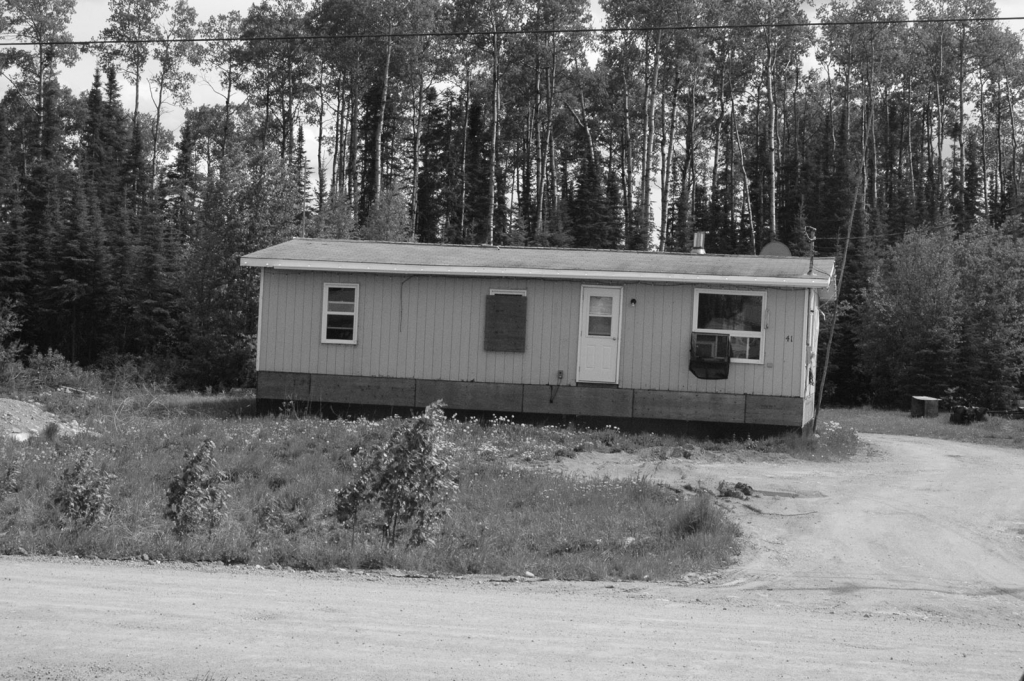First Nations across northern Ontario are being trapped in a cycle of high debt loads that leave them unable to deal with massive housing needs, says a Nishnawbe Aski Nation (NAN) deputy grand chief who believes he has a solution to the problem.
Les Louttit, NAN deputy grand chief, told Wawatay News that NAN communities have to pool their resources, prioritize housing needs across the North and create a NAN-owned and operated housing organization in order to move forward on the dire needs facing the communities.
Louttit said the problems on the ground with crowded houses and poor construction are plain to see, but the roots of the problem go back to financing cycles that leave First Nations paying much of their capital housing funds to cover increasingly unmanageable debt loads.
“It’s an unseen thing,” Louttit said. “What you see in communities is one thing, but behind the scenes is this financing and funding cycle.”
The problems of a lack of adequate housing in northern Ontario First Nations has been well documented, with last winter’s housing crisis in Attawapiskat bringing the concerns to light. The issues seen in Attawapiskat – such as crowded homes, mouldy conditions and a desperate need for more houses – are found across most northern Ontario First Nation communities.
Thirty-one NAN communities were studied as part of a national infrastructure analysis done in 2011. Nearly every community had more homes in need of replacement or repair than adequate homes.
One of those communities, Keewaywin, had 14 adequate homes compared to 99 homes either needing replacement or repair, according to the study.
Keewaywin Chief David Thompson said that the community made a five-year housing plan a number of years ago, but has had troubles meeting it.
“We have a severe housing shortage,” Thompson said. “Twenty-five years ago we ordered 32 mobile units and created a community. In the last five to eight years, the deterioration of the homes has been pretty bad.”
Part of the problem for communities like Keewaywin is that capital housing money allocated by the federal government each year is not enough to cover new homes for a growing population as well as repairs to the numerous existing homes in need.
Small communities also struggle with delays in getting federal government guarantees for housing loans, and in meeting the paperwork requirements for accessing additional housing monies from other grant programs.
“There are a lot of young couples and Elders that need new homes,” Thompson said. “And the condition of many of the homes we do have are not very good, but we don’t have the resources to renovate those homes properly.”
Louttit said the smaller communities across NAN suffer the most from the current system. In comparison, larger First Nations have more capacity to apply for programs and access additional funds to use for housing, he said.
The deputy chief said the problem is even larger than what the national assessment determined. Across NAN’s 49 NAN communities an estimated 5,000 new homes are needed, at a price tag of roughly $1.3 billion, according to an internal NAN study.
In response to what he calls a flawed current system, Louttit is pushing NAN to establish a for-profit corporation that would work on behalf of communities to maximize the amount of housing available using the pooled money of all participating First Nations.
He wants to start thinking of five-year plans for housing across a large number of communities, so that NAN can prioritize needs across the entire region.
The idea is based on economies of scale – that it is cheaper for one organization to plan for and build a large number of homes across many communities than it is for each community to build just a few homes on their own.
Cost savings will result from bulk-order purchasing of supplies, having a centralized administration system and being able to access housing financing expertise that all communities can benefit from.
Louttit said an organization of this sort will also help First Nations keep their loans to a manageable percentage of annual operation budgets, in order to prevent the situation seen in many bands today where paying off debts takes up much of the annual housing budget and often result in defaulting on loans, which makes future borrowing difficult.
“We will help each First Nation develop a five-year action plan based on housing needs,” Louttit said. “At the end of five years, you’ll have addressed the backlog to an extent and then First Nations can go forward in years to come.”
A NAN feasibility study of the new housing corporation is expected to be released later this month. Louttit hopes the new housing corporation can start operating soon after that.
Gold has arrived.










Gold has arrived. Here in the north of Ontario we see vast streams of gold shimmering across the landscape as autumn is here and the the leaves are turning...
I am the product, evolution of many thousands of years as are you. I grew up on the land in the remote far north of Ontario following in the footsteps of my...